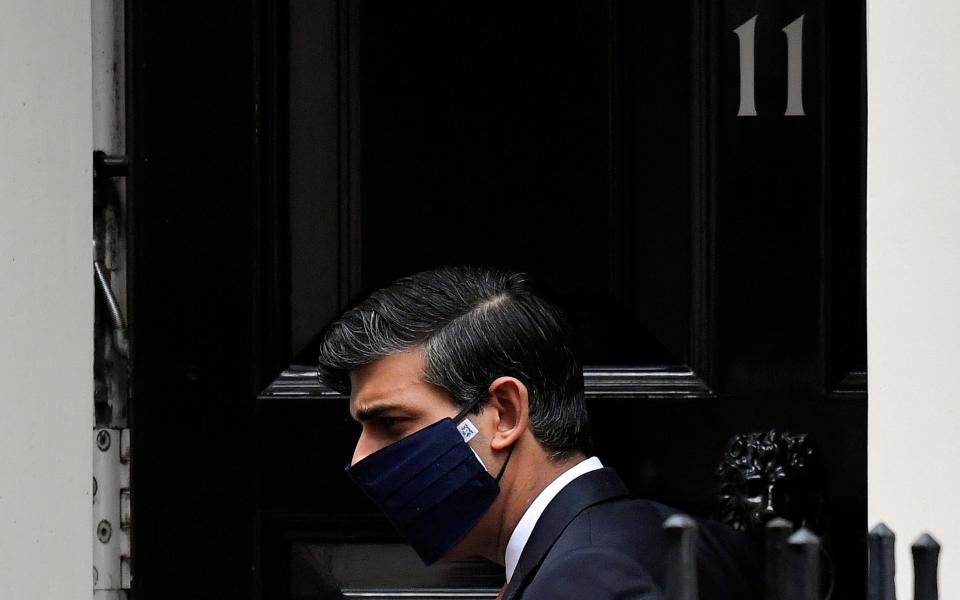Rishi Sunak opens his chequebook for a more generous job support scheme

Rishi Sunak is back, and he has new presents for the economy.
Billions of pounds of new support is on offer, souping up the schemes offered in the Winter Economy Plan in recognition of the tough new restrictions hitting businesses particularly in Tier 2 and Tier 3 regions.

Will it work?
It should certainly work better than the initial Job Support Scheme announced in the Winter Economy Plan a few weeks ago.
Back in the hazy mists of time – Sept 24 – Sunak, flanked by the bosses of the Trades Union Congress and the Confederation of British Industry, unveiled the successor to the furlough scheme, in full confidence that the economic recovery would continue and so he could wind down his temporary support measures.
Unfortunately he was undone by two problems.
First, that scheme was supposed to encourage people back to work. Then came the second wave and subsequent decision to ramp up restrictions again.
The second was a big hole in his own plan.
Under the original scheme, an employer would have to pay 55pc of a worker’s usual wages in return for 33pc of their usual work – not a particularly appealing prospect. The Government would chip in an extra 22pc.
That meant it would make more sense to keep one worker full time than two part-time.
Under the new scheme, an employee working the minimum required will put in 20pc of their usual hours, receive 24pc of their normal pay from their employer, and 49pc from the Government.
Torsten Bell at the Resolution Foundation says this fixes “the massive flaw in the scheme and will make a big difference to its effectiveness”.
What does that mean for the economy?
It is not going to save every single job – even in economic booms, some people become unemployed, and at a time when GDP is still far below its pre-pandemic level, not every position can be sustained.
But it should be a big help.
“The Chancellor's new job support measures are certainly markedly more generous and comprehensive,” says Howard Archer, chief economic advisor to the EY Item Club.
“I still think unemployment will rise significantly over the coming months as many firms especially in the hospitality sector will find life very difficult, if not impossible. But I do think Sunak's latest move will save a considerable number of jobs and limit the hit to the economy.”
Tony Wilson at the Institute for Employment Studies fears hundreds of thousands of jobs could still be at risk in the North West, North East and London where tighter restrictions limit businesses’ ability to bring back staff even for one day per week.
“This means we have got a workable short-term working scheme and that is great. Cuts to the employer contribution in particular mean that for most businesses this will stack up now,” he says.
“The big problem though is that in the most disrupted workplaces, in the Tier 2 and Tier 3 areas, this still will not be enough. Keeping the one day per week requirement means that when firms just cannot bring people back, they will have no choice but to lay them off.”
There is also nothing new to encourage hiring and help those who have lost their jobs into new positions.

How much will it cost?
Unusually for the Treasury, this is something of a blank cheque.
The business grants could cost more than £1bn. Support for the self-employed will cost £3.1bn between November and January, with more to follow from February to April.
But the expanded Job Support Scheme has no clear estimate, as take-up is currently uncertain.
If the expiring furlough scheme is anything to go by, it could be several billion per month.
The latest numbers from HMRC show that in the month to Sept 20, when the Government paid 70pc of wages, £3.9bn was claimed under the JRS.
Given the number of people on furlough has fallen only slowly since then, if these trends continue, it could be that £3bn or more will be spent on the new JSS each month, rapidly getting to £10bn or more over three months if the tier 3 restrictions are not lifted soon.
Is that too much?
It is painful, but economists are not panicking.
Analysts at Citi expect the total cost to be up to £20bn by April – but that is small relative to a total deficit estimated at as much as £391bn.
More importantly, it is about preserving jobs through a temporary crisis. Many of these workers will be in demand again once the pandemic is over, so it makes sense to keep them in jobs.
“It is a one-off expense, at a time of low interest rates, that should have a longer-term benefit of fewer firms closing, securing the basic relationships in the economy and protecting jobs,” says Matthew Lesh at the Adam Smith Institute.
“At some point we will need to allow firms to fail, people to start new ventures, capital to reallocate, and new skills to be built and jobs created. The Government cannot and should not save every job at any time. But Tier 2/3 restrictions are not the time for creative destruction.”
The money will be a cost eventually, but hopefully keeping jobs and businesses afloat means the UK will be left with a bigger economy to pay for it when the time comes.

 Yahoo News
Yahoo News 